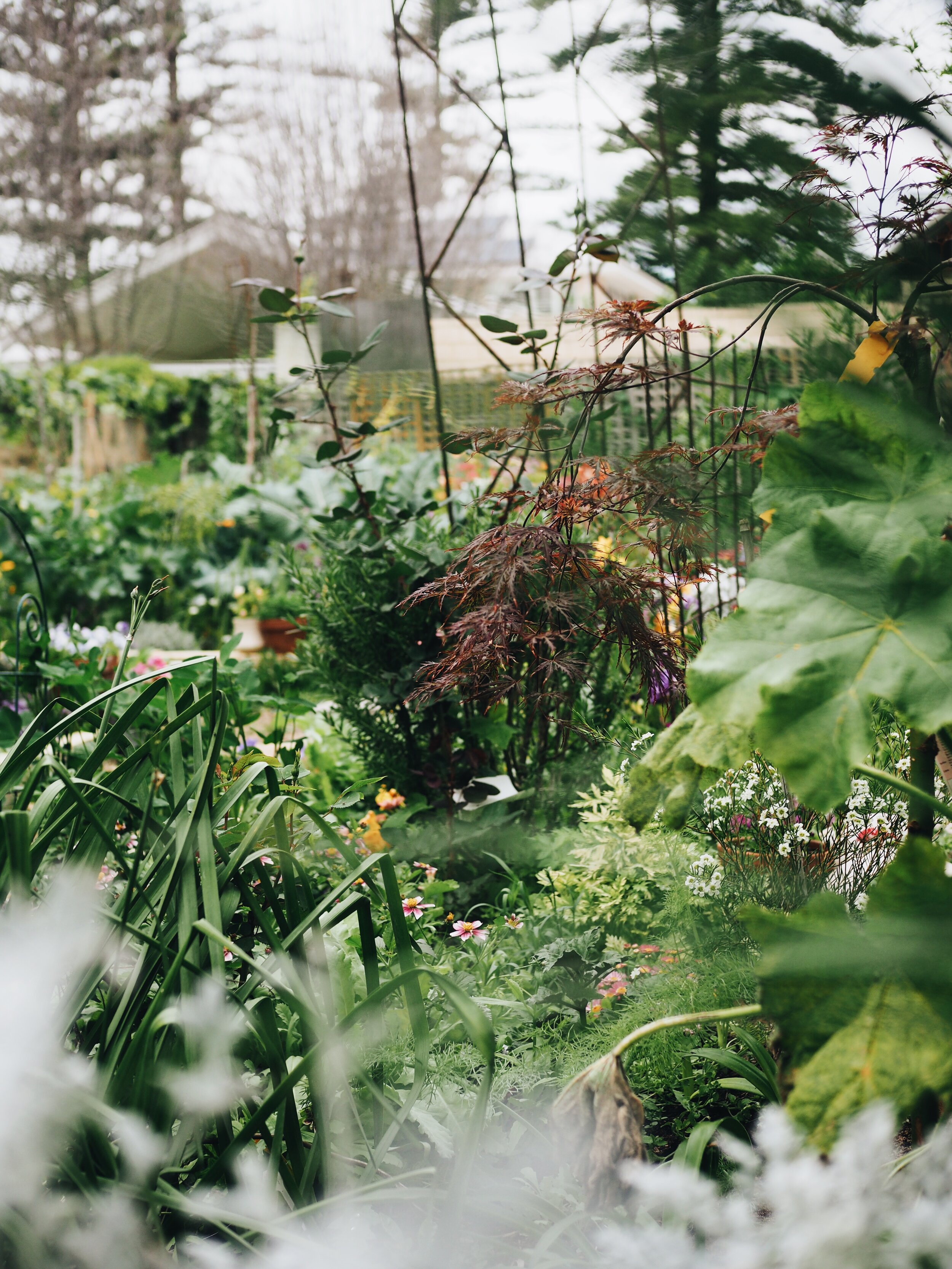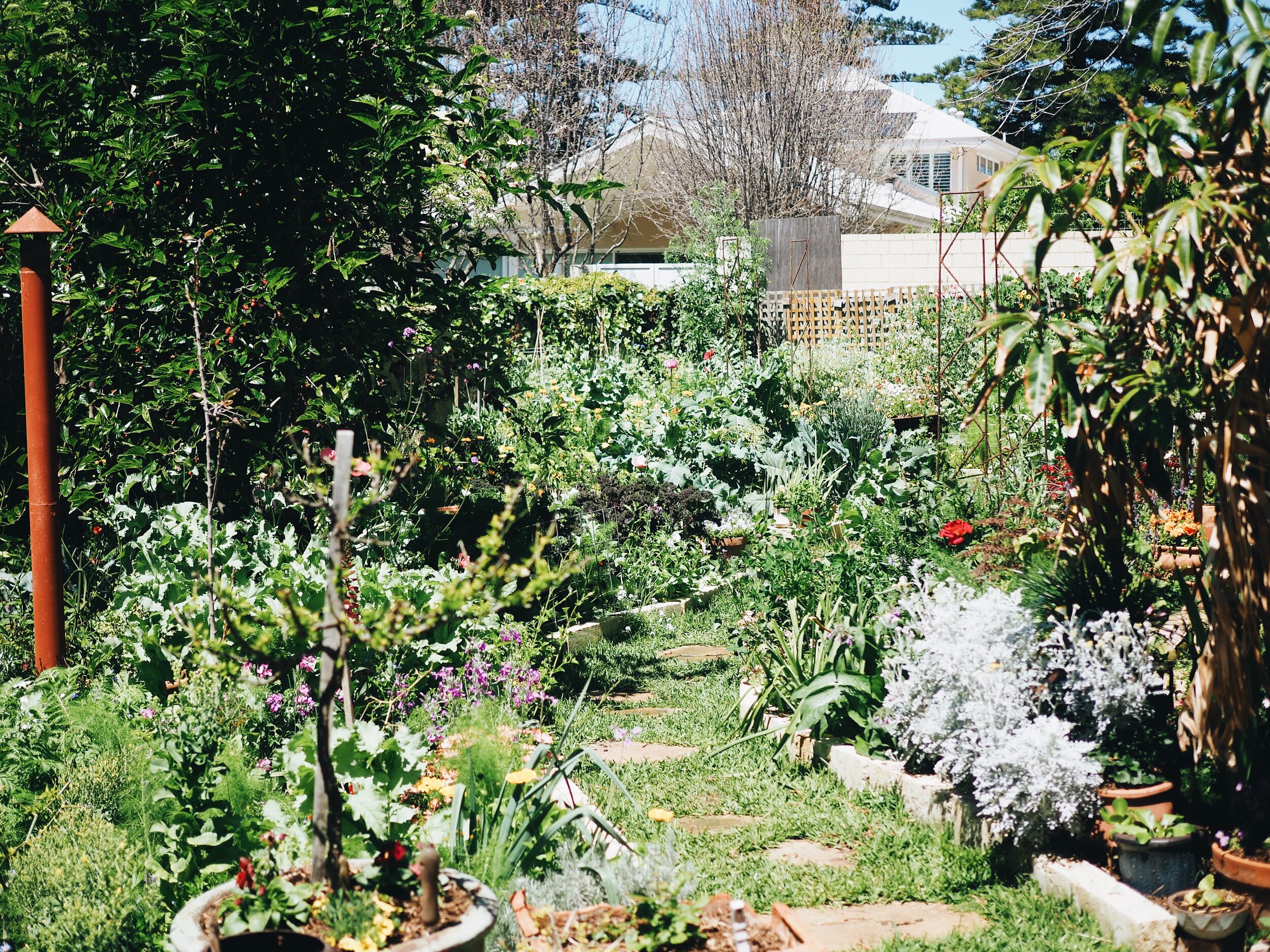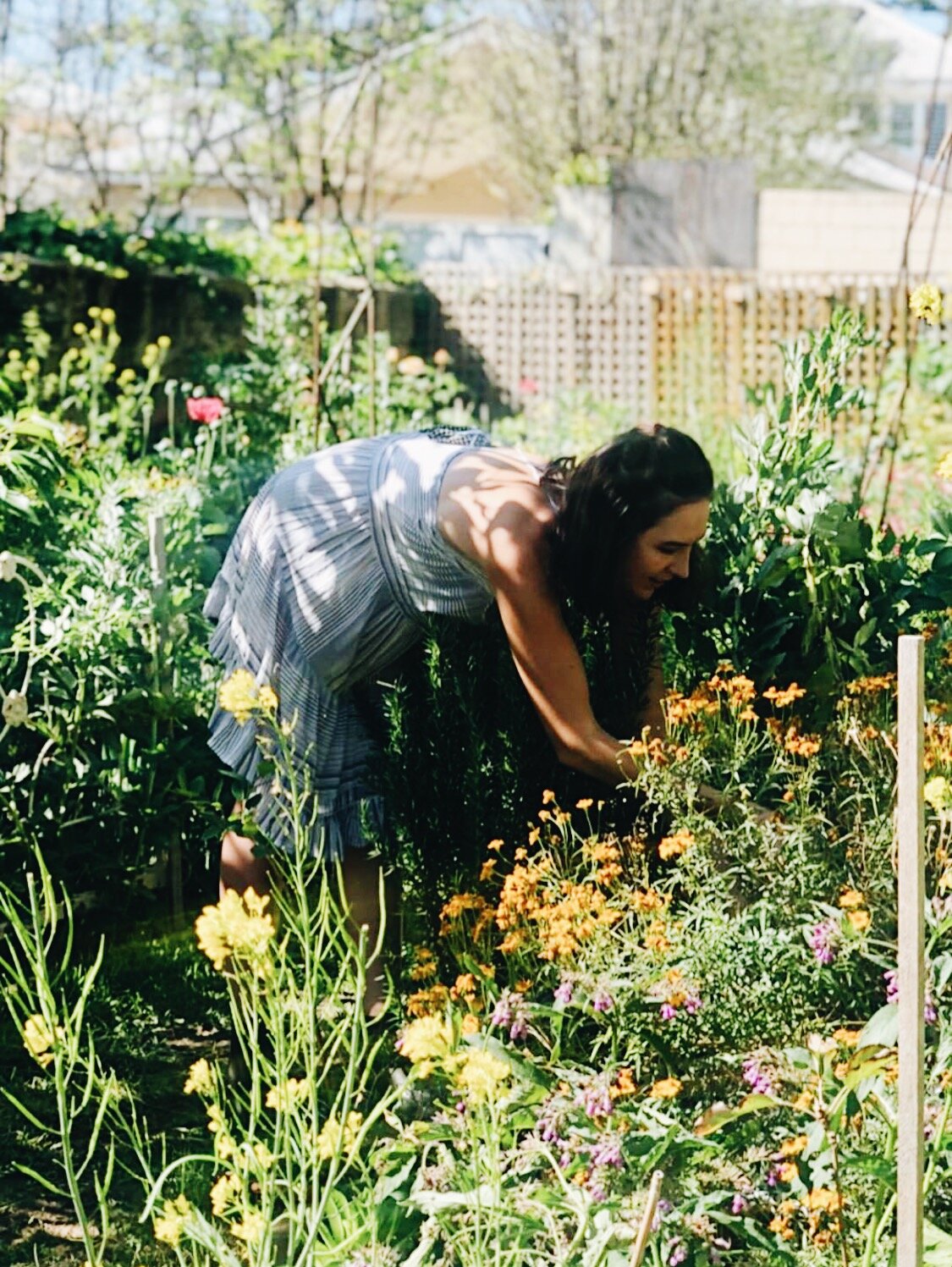How to Understand your Garden (and Why it Matters!)
“Any fool can know. The point is to understand.”
― Albert Einstein
Whether you are a well-seasoned gardener or just starting out, one fact remains true: the more deeply you understand your garden, the better it will be.
Far too often we think we ‘know’ what is going on with our gardens. We think we detect a specific nutrient deficiency, an aberrant pH level, a bug infestation. Things that must be addressed. Solved. Fixed. We diagnose and begin to treat like a well-practiced surgeon embarking on a standard, routine operation. We might try one thing, or five, or ten. Maybe sometimes it works, but probably sometimes it doesn’t.
The thing is, aspiring to know exactly what is going on with our gardens (and then trying to ‘fix’ it) tends to lead to frustration and - often - disappointment. What is usually going is that there are a million tiny things that are all interrelated and interconnected and are culminating in whatever problem we’re trying to fix.
Last summer, for example, warmer nights enabled chilli thrips to descend further south than they usually do. They made it to Perth and proceeded to wreak havoc on our roses. Without enough preexisting insect biodiversity (and consequently few natural predators), the thips were able to reproduce en masse in the blink of an eye. Instantly everyone ran to the nearest plant shop, bought up all the pesticides and ‘eco’ oils on offer and went to war. And maybe it looks like it worked. The thrips have gone, right? But did you know that thrips need warm and dry weather to survive and reproduce? Ideally something between 23 ℃ ~ 28 ℃ (hot weather also speeds up their life cycle until the mercury gets above 35˚C when they start to die off). At cold temperatures they simply stall out and vanish.
Did the sprays kill the thrips, or was it just the arrival of winter? I’m putting my money on winter. Plus probably a hundred other things I haven’t even thought of.
I think we need to be humble with our gardens. Our soils are filled with entire universes of microbes. The weather fluctuates in ways we can barely notice or perceive. We are blind to the roots beneath our feet, to the various concentrations of molecules and compounds sprinkled through our garden beds, to the bedrock we sit upon or the streams of underground water that swell up and sink down with the changing seasons. There is so much at play and I am but a lowly ape who has left the forest and decided to grow some potatoes.
I try to remember this every time I accidentally kill one of my plants.
I’m not saying we should give up or embrace total ignorance with respect to our gardens. Learning more about the factors at play in our backyards is fun and interesting and handy. And every week I sit down to try and elucidate a tiny part of that, so rest assured I consider it a worthwhile pursuit! But as Einstein observed, there is a difference between knowing something about our gardens (a plant name, a pH level, what sprays kill aphids), and understanding our gardens. Understanding them as changing worlds, fluctuating civilisations, flexible landscapes.
Specifically, there are five areas of our gardens where I think pursuing a deeper understanding is massively beneficial. Fortunately, these happen to correspond perfectly with the five characters featured in the theme song for Captain Planet:
Just like the Planeteers (and you can be one, too), these five aspects of our garden need our care and attention. Learn to more deeply understand your garden in terms of these five things and your plants will thank you!
Earth (understand - and improve - your soil)
I’m very pleased that ‘earth’ comes first in Captain planet’s song because we often underestimate the impact of the soil in our gardens. In fact, good, healthy soil is the first and biggest thing to get right.
Your garden might receive plenty of water, but if your soil is hydrophobic (i.e., it repels water) none of that water is going to reach your plants’ roots. Your veggies might get plenty of sun but if your soil lacks nutrients their growth will still be stunted. Get your soil right from the very beginning and everything single aspect of your gardening will get easier.
Good soil leads to healthy plants. Healthy plants bloom and fruit better, they grow faster and are less susceptible to diseases and bugs. What’s more, having healthy soil means you have to water less (soil that contains plenty of organic matter is much better at holding onto water) and if you have alkaline soil a thick, healthy layer of topsoil can help to mitigate some of the negative effects of a high pH.
Achieving healthy soil doesn’t have to be complicated either. There are endless products on offer at gardening shops, all claiming to be essential for your garden beds. Don’t feel like you have to believe them and certainly don’t feel like you have to buy them all. Soil improvement can be expensive (especially if you’re starting with the kind of sandy, coastal soil my garden had at the beginning), but it doesn’t have to be complicated. I add three things to my garden (and almost never bother with anything else):
1. Clay - soils tend to be either heavy and clay-based or sandy and dry. I add clay to my sandy soil, which helps it to retain moisture and improves its structure. FYI - soils actually get a lot more complicated than this. I’ve read articles suggesting there are hundreds of different soil types, not just the usual clay/loamy/silty/sandy that we often hear about. Like all things in the garden soil can get much, much more complicated. For the purposes of getting your soil to a good place, however, it’s totally fine to start simple. If your soil is sandy (like mine) clay will make a big difference to its ability to retain water and hold onto nutrients. If your soil is heavy and clay-based, add sand or grit, which will help improve drainage and aeration, making it easier for plants to push their delicate roots down into your soil. Until you’ve done this, it’s not really worth getting bogged down in all the other complexities - if they need to, those can come with time.
2. Manure - cow manure, sheep manure, chicken manure, pig manure, I’ve even heard of llama manure and camel manure. I mean, obviously EVERY living animal produces manure so I guess there’s no reason to be surprised that there’s a near infinite number of manures to choose from! None of that matters too much. What matters is that the manure you select has been ‘well rotted’ which means that some time has elapsed since it exited its creator. At least 6 months ideally. Fresh manure can be very strong and can burn plants’ leaves, so you want to buy a manure that is mature! A mature manure!
If you wanna nerd out on crap then yes, different animals will produce manure that has different quantities of the three macronutrients plants need for optimal health (NPK - Nitrogen, Phosphorous and Potassium). Download my free ‘Manure Manifesto’ handout below to get a broad and general rundown of what you can expect to get from different manures. But don’t treat it like gospel. It’s often not as simple as ‘chickens produce high Nitrogen manure’ because the manure the chickens produce is greatly affected by what they’ve been fed, among many other factors.
What you need to know is that manure is a great regular addition to your garden beds because it will add the vital macronutrients your plants need to grow strong. It’s also preferable (in my opinion) to liquid-based fertilisers which may add nutrients but do nothing to improve soil structure. I add either a cow/sheep/chicken mixed manure or a tasty load of something called ‘piggy post’ (pig manure) every season and whenever the soil in a particular bed is looking sad. Do likewise and your plants will thank you!
3. Mulch - mulch helps seal moisture into our soils once we’ve improved them with clay/sand and animal manure. It also helps shield the soil from sunlight, which can degrade it quickly. I like to use lupin mulch because lupins are nitrogen fixing plants and (although I have not empirically tested this myself) as the mulch decomposes it - theoretically - it is supposed to add some nitrogen back into the soil, feeding the plants further. You can also add pea straw for a similar effect.
In much the same way that I don’t expect to ever fully understand all the different working parts of my garden, I don’t expect to fully understand what’s going on in my soil. In fact, researchers haven’t even identified or categorised all the different microbes living in our soils, and they expect that (much like our gut microbiome) the soil microbiome in one garden may be starkly different to the microbiome in another garden. Given near-certain uncertainty, I keep it simple: clay, manure and mulch.
Fire (understand sunlight)
Understanding the passage of the sun through your garden will really help you to decide what to plant and where. Our gardens might seem like one big space but in fact they are composed of many little pockets of spaces; mini microclimates that are all subtly - but significantly - different from one another. This is especially the case if you have large trees or tall walls in your garden, as they will affect the way the sun, rain and wind impact different areas.
To understand how the sun is affecting your garden, make a point of going to see where sunlight hits different areas at different points in the day and at different times of the year. Once you make a habit of observing the sun regularly in your garden, you’ll start to notice just how much this single variable changes over time. Not only will the sunlight be different during winter compared to summer and during the mornings compared to the afternoons, but also over time trees will grow taller and wider and areas that used to receive full sunlight might one day receive dappled light or shade instead.
As a general rule of thumb, veggies that grow fast and big (zucchinis, pumpkins, watermelons, tomatoes, broccoli) need to get at least 6-8 hours of direct sunlight a day. Root vegetables and leafy greens, which grow more slowly, can tolerate less light. Capsicums like plenty of bright light but can be burnt if exposed to harsh summer sun. Again, you don’t have to put pressure on yourself to know everything about where every single plant should go in your garden. Simply deciding to be more observant and inquisitive about sunshine in your patch will help you to deepen your understanding of what might be more likely to work, and where.
Wind (understand wind tunnels)
Just like sunshine, wind can very a lot in your garden. For many plants this isn’t too much of an issue, but certain plants - like bananas trees, maple trees, hollyhocks flowering on delicate spikes and other tall, spindly plants that are easily snapped - will fare much better if planted in a sheltered position.
As with your sunshine observations, spend some time noticing the movement of wind through your garden. This can obviously vary a lot from day to day and season to season, but eventually you will notice that some spots are consistently more sheltered than others, while others are raging wind tunnels. Plant your wind-sensitive plants where they won’t get buffeted around.
If your whole garden tends to get battered by wind, consider creating some shelter for yourself. Adding thick hedges or dense trees can really help to create wind breaks in your garden, giving you sheltered spaces to grow more delicate plants.
Water (understand moisture levels)
It’s obvious that trees and walls cast shade in our gardens but what is less obvious is the effect that they have on the water in our soil. It’s easy to forget that trees and walls act like umbrellas and rain shields, stopping rain from reaching certain parts of our garden beds. This can lead to tricky areas of garden that are both shady and dry. While lots of plants like full sun and plenty of water, it’s harder to find plants that enjoy growing in shady and dry conditions. But, don’t worry - it can be done! It’s just important to bear this in mind if you’re trying to plant in a dry, shady spot and to look specifically for plants that can handle it.
Other factors can influence moisture levels in your garden. For instance, if your garden is on a slope, water is more likely to trickle down the slope and collect in the lower areas of your garden. As mentioned earlier, soil type can also affect water retention, so if you have a sandy bed that hasn’t been looked after in a while it will capture less water than a rich, well-fed garden bed. The key thing to do is simply to pay attention to which areas of your garden tend to be most moist and which are dry. You don’t even need to change anything! Soil moisture (or a lack thereof) is only a bad thing if you’re trying to grow plants that don’t appreciate those conditions. Understand your garden microclimates, know what plants are well suited to them and plant accordingly. Gardening is infinitely easier when you grow plants that are disposed to like your pre-existing conditions!
Heart (understand the creatures in your garden)
The final - and most wonderful - thing to understand about your garden is who shares it with you. The wilder and older your garden gets, the more animals will decide to call it their home. Skinks, birds, slaters, snails, caterpillars, lacewings, ladybirds, moths, bees, aphids, wasps, spiders, slugs, ants, earthworms, millipedes, grasshoppers, mice, frogs, roaches and butterflies.
Notice how there are no categories in that list. Not ‘pests’ or ‘vermin’ or ‘beneficials’. It’s just the animals in my garden - neither good, nor bad. I strongly encourage you to look at the animals in your garden in this way too. What is good is diversity. What’s bad is imbalance. And, the good thing is, as you welcome more animals into your garden, as you encourage greater diversity, you will be less likely to get serious imbalances. Predators will keep their prey in check and mass overpopulations of certain bugs will become uncommon and less long-lasting.
While learning to understand your soil, the sunshine and all those other factors will be helpful, learning to understand the lives of the animals in your garden is truly what makes gardening a profound and enjoyable experience. There is no greater (or more honest) compliment to a gardener than to see that an animal has chosen - out of all possible locations - to live in the space you have created. To harvest the pollen from the flowers you have planted. To steal the apples off your trees! Or to bathe in your pond.
photo by Natasja Kremers
Practice becoming more observant of these creatures and you will be rewarded with unexpected bursts of joy whenever you spot a mysterious new bug lurking on a leaf. Make a habit of watching them closely and you will start to see how complex and beautiful their bodies and behaviours are. Try to work out what they eat, where they hide, how they mate, where they lay their eggs. Watch how they fly or slither. Not only are they all incredibly beautiful but they can offer clues as to what is going on in your garden.
Plants tend to be eaten by slugs, snails and caterpillars when they are young and vulnerable, stressed out or nearing the end of their life cycle. A heap of ant nests is a reliable indicator of dry soil. A wave of aphids may reflect a warm change in the season. An influx of cockatoos shows your pecans are ripe.
Like every garden element discussed today - don’t expect to ever fully know what’s going on with the animals in your patch. But life is long and there are many pleasurable days to while away, deepen our understanding of the complexities of our gardens. The key, ultimately, is simply spending time in them. Watching and appreciating them for all their intricacies, for everything that is beautiful and confusing and surprising, and everything there is yet to learn.
I hope you enjoy it as much as I do.
Xx Casey










